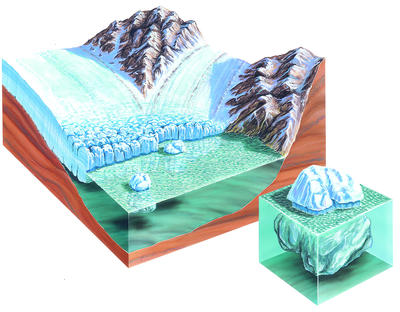|
|
 |
|
|
 |
|
What is an iceberg?
|
Vast sheets of ice cover the coldest parts of the Earth. When these ice sheets meet the sea, parts break off and float away, forming icebergs. In the Arctic, lumpy and angular icebergs form when the ice in a glacier meets the sea. In the Southern Hemisphere, icebergs break off the ice cap that covers Antarctica. These broad, flat icebergs can be as large as a country. | | Ice is less dense than seawater, so huge masses of ice can float in the ocean. |
|
| |
Previous:
Back
|
Book:
1001
|
Section:
Earth
|
Chapter:
Sea
|
|
|
|
 |
|
|






